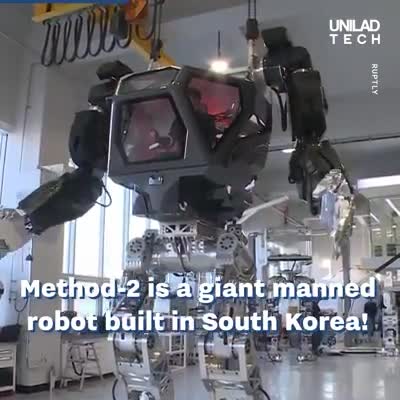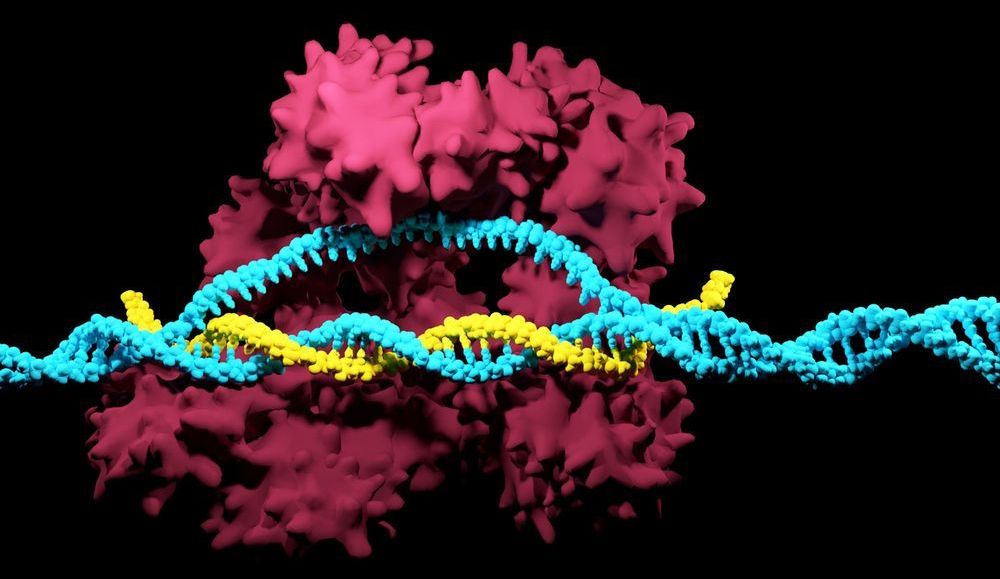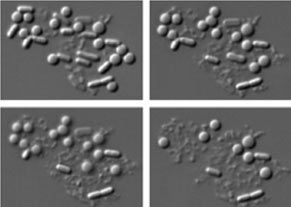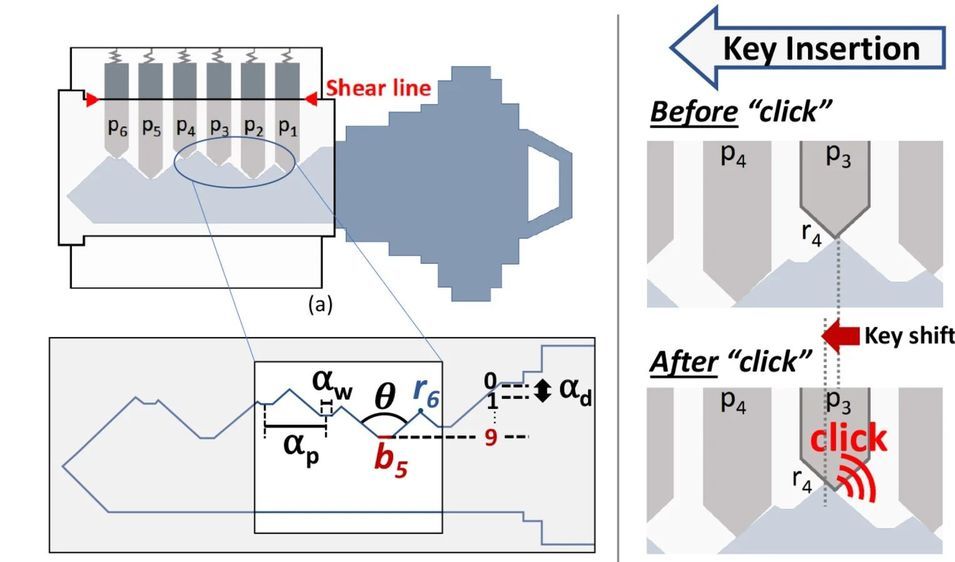Page 7422
Aug 26, 2020
Handheld device could detect CRISPR bioweapons before they spread
Posted by Quinn Sena in categories: biotech/medical, genetics, military
Bits of DNA known as gene drives that force themselves through a population could be use maliciously, but thankfully there is a way to detect them before they spread.
Aug 26, 2020
A ‘Kill Switch’ for Rogue Microbes
Posted by Quinn Sena in categories: bioengineering, biotech/medical, genetics
Biologists often speak of switching genes on and off to give microbes new abilities–like producing biofuels or drugs, or gobbling up environmental toxins. For the most part, though, it’s nearly impossible to turn off a gene without deleting it (which means you can’t turn it on again). This limits biologists’ ability to control how much of a particular protein a microbe produces. It also restricts bioengineers’ ability to design new microbes.
Now researchers at Boston University, led by biomedical engineering professor James Collins, have developed a highly tunable genetic “switch” that offers a greater degree of control over microbes. It makes it possible to stop the production of a protein and restart it again. The switch, which could be used to control any gene, can also act as a “dimmer switch” to finely tune how much protein a microbe would produce over time.
The researchers made a highly effective microbe “kill switch” to demonstrate the precision of the approach. For years, researchers have been trying to develop these self-destruction mechanisms to allay concerns that genetically engineered microbes might prove impossible to eradicate once they’ve outlived their usefulness. But previous kill switches haven’t offered tight enough control to pass governmental regulatory muster because it was difficult to make it turn on in all the cells in a population at the same time.
Aug 26, 2020
Vanadium-base alloys for fusion reactor applications — a review☆
Posted by Quinn Sena in categories: materials, nuclear energy
Vanadium could be used for outer hulls of spaceships to absorb sun like energy or higher.
Vanadium-base alloys offer potentially significant advantages over other candidate alloys as a structural material for fusion reactor first wall/blanket applications. Although the data base is more limited than that for the other leading candidate structural materials, viz., austenitic and ferritic steels, vanadium-base alloys exhibit several properties that make them particularly attractive for the fusion reactor environment. This paper presents a review of the structural material requirements, a summary of the materials data base for selected vanadium-base alloys with emphasis on the V-15Cr-5Ti alloy, and a comparison of projected performance characteristics compared to other candidate alloys. Also, critical research and development (R&D) needs are defined.
The relatively high thermal conductivity and low thermal expansion coefficient of vanadium-base alloys, which result in lower thermal stresses for a given heat flux compared to most other candidate alloys, should enhance the reactor wall-load and lifetime capability. Since the mechanical strength of vanadium-base alloys is retained at relatively high temperatures, higher operating temperatures are projected for these alloys than for austenitic or ferritic steels. The refractory metals, including vanadium, characteristically exhibit good corrosion resistance in purified liquid metals. The vanadium alloys also exhibit favorable neutronic properties which include lower parasitic neutron absorption leading to better tritium breeding performance, lower bulk nuclear heating rates, and lower helium generation rates compared to the steels.
Aug 26, 2020
‘Zombie star’ baffles astronomers after it survives FIVE supernova EXPLOSIONS
Posted by Quinn Sena in categories: cosmology, futurism
Circa 2017 could be used in the future for force fields to survive supernova blasts directly.
A MYSTERIOUS star, dubbed the ‘Zombie star’, has baffled astronomers after it has survived five supernova explosions.
Aug 26, 2020
A thermal invisibility cloak actively redirects heat
Posted by Quinn Sena in categories: biotech/medical, materials
Light, sound, and now, heat — just as optical invisibility cloaks can bend and diffract light to shield an object from sight, and specially fabricated acoustic metamaterials can hide an object from sound waves, a recently developed thermal cloak can render an object thermally invisible by actively redirecting incident heat.
The system, designed by by scientists at the Nanyang Technological University (NTU) in Singapore, has the potential to fine-tune temperature distribution and heat flow in electronic and semiconductor systems. It has application in devices with high requirements for efficient dissipation and homogenous thermal expansion, such as high-power engines, magnetic resonance imaging (MRI) instruments, and thermal sensors.
“Because of its shape flexibility, the active thermal cloak might also be applied in human garments for effective cooling and warming, which makes a lot of sense in tropical areas such as Singapore,” said Prof. Baile Zhang of NTU.
Aug 26, 2020
FDA Approves Cometriq to Treat Rare Type of Thyroid Cancer
Posted by Quinn Sena in categories: biotech/medical, futurism
This is an essay written at the end of the first year of an oncology fellowship that was filled with ward months seeing leukemia, lymphoma, solid malignancies, and multiple hematologic abnormalities. In the future, I may look back at this essay and see myself as naïve, truly optimistic, and not yet weathered and jaded from years of success and failure. What I have learned can be summarized here, as many of us do while looking at consults or book s, by skipping to the end. Remember: don’t quit! There are good days and bad days for us, but no matter how high the high or low the low, the patient is the one with the disease. Screen and enroll patients in clinical trials, as research brought us the treatment choices we have today. Dr Michael Craig, one of my mentors in fellowship, left a note near the fellows’ microscope. I have stared at acute leukemia through those eyepieces, and made therapeutic decisions and diagnoses that changed people’s lives. The note encompasses what we do, what we represent as oncologists. It reads: “Cancer sucks. What can you do? Call me with questions.”
Richard Pazdur, MD
The US Food and Drug Administration today approved Cometriq (cabozantinib) to treat medullary thyroid cancer that has spread to other parts of the body (metastasized).
Aug 26, 2020
Researchers Find a Way to Copy Keys Using the Sounds They Make Inside a Lock
Posted by Jim Brownfield in categories: 3D printing, mobile phones
Keyed locks are relatively easy to pick if you’ve spent enough time mastering the skill. But researchers at the National University of Singapore have just made it even easier. If you can use a smartphone to record a sound, you can capture all the information you need to create a working duplicate of a key.
The newfound vulnerability – although it’s more a case of modern technology compromising an outdated technology – was discovered by cyberphysical systems researcher Soundarya Ramesh and a team at the National University of Singapore. The attack, called SpiKey, works on what are known as pin tumbler locks that are opened using a key with a unique ridge pattern on its edge. As the key slides into the lock, the ridges push six metal spring-backed pins to different heights which, when all are properly aligned, allow a tumbler to turn and a lock to be opened. They’re one of the most common types of locks out there, used in everything from doors to padlocks, which makes this attack especially concerning.
To open a pin tumbler lock without the key, a locksmith (or lock pick) uses a specialised set of tools to manually adjust the height of each pin, one by one, until they figure out the unique arrangement needed for the tumbler to turn. The SpiKey technique is magnitudes easier, and requires little to no special skills, aside from the ins and outs of operating a 3D printer.

The 13ft robot responds to the actions of its handler who is seated in a central cockpit 🙌
Ruptly.
Aug 26, 2020
Researchers find method to regrow cartilage in the joints
Posted by Jeff Myers in category: biotech/medical
In laboratory studies, Stanford School of Medicine researchers have found a way to regenerate the cartilage that eases movement between bones.














